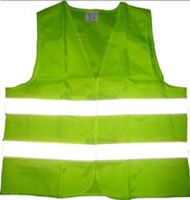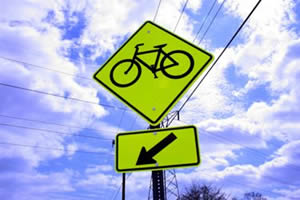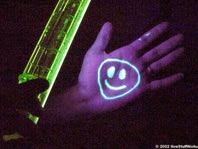The familiar neon colors of highlighters, or fluorescent marker pens, are among the most generally used fluorescent substances. Chalks and pens are also available in fluorescent colors.
What is fluorescence?
The production of light from heat, or incandescence, is familiar to everyone. But other processes can also yield light – without ever using heat. The term photoluminescence describes a process that produces light using light energy. Two forms of photoluminescence, fluorescence and phosphorescence, are defined by the length of time the emitted light continues to glow.Fluorescence refers to the immediate release of light, where light is emitted within a fraction of a second after excitation. Phosphorescence refers to the release of light that lasts longer – seconds or even hours after the excitation has stopped. Phosphorescence is a longer-lasting process than fluorescence because of the structure of the molecules at the quantum level.
The energy transitions from excited, higher energy states to stable ground states are “forbidden” by quantum rules. In real terms, they do in fact occur, but at such low probabilities that these energy transitions last a very long time.
Check this video :)
General uses of fluorescence
While the marks made by fluorescent highlighters quickly draw our attention to important points in a document, fluorescence is also useful in a number of safety applications, as a scientific research tool, and in investigative medicine.Fluorescent paint, or black light paint, glows in ultraviolet light. This is an example of photoluminescence. Phosphorescent paints also emit light when excited by visible or ultraviolet light, but do so over extended periods. This long-lasting effect of phosphorescents also allows kids to enjoy “glow-in-the-dark” adhesive stars on the ceilings of their rooms.
Common phosphorescents include petroleum jelly, glow-in-the-dark paints, the quinine in tonic water, and some detergents. Clocks and watches have their faces or numbers and hands coated with phosphorescent paints so that we can see the time in the dark. Emergency routes, doors, and stairways are often marked with theses paints so we can find our way out of buildings when the power fails.
One of the most familiar applications is the fluorescent light bulb. When the light bulb is turned on, an electrical current passes through mercury vapor in the light bulb. The current excites the mercury atoms. As electrons in the mercury atoms drop back from their excited state to their ground state, they emit photons of ultraviolet light. The inner surface of the glass tube is coated with a fluorescent chemical, which emits light when excited by this ultraviolet light. These tubes are more efficient and longer lasting than incandescent bulbs.

|

|

|
Fluorescent vests protect emergency service personnel and road workers, and are increasingly used to protect cyclists, runners, children, and others who share the road with traffic. Fluorescent paint makes this sign stand out more clearly in daylight as well as at night. |
||

Fluorescence can also make ordinary life more exciting; the sport blackminton, the ultraviolet version of badminton, uses fluorescent shuttles, clothing, and body paint to add drama for both players and spectators.
Other applications of fluorescence in safety equipment include marine buoys and road signs, which also make use of fluorescent paints. Fluorescent or black light paints tend to be bright in color, with yellow, green, orange, and red being common hues.
Fluorescence is used to enhance various kinds of investigation, from the study of genes and cell structure using fluorescence microscopy, to locating useful mineral resources such as oil and gems. Substances that fluoresce naturally make the subject easier to study; for instance, scorpions fluoresce and are much easier to see in ultraviolet light.
Medical research makes widespread use of fluorescence to understand biological processes and in diagnosis. Fluorescent dyes may be used to mark antibodies, for example, or can reveal the flow of body fluids like blood or tears.


Inside a fluorescent lamp, phosphor powders are used to convert the ultraviolet light produced by a mercury arc into visible light, particularly into red light so as to produce a "warmer" light approximating daylight.
The available energy transitions for a semiconductor containing both donors and acceptors as dopants.
Fluorescence and photoluminescence
Fluorescence and photoluminescence are further applications of useful doped semiconductors. Dopants are used to reduce the energy band gap and produce visible light in substances that would normally emit ultraviolet light. In semiconductor materials containing donor and acceptor impurities, ultraviolet or electrical energy may be absorbed to excite an electron from the valence band directly to the conduction band.The electron may take a return path via the donor and acceptor energy levels. These energy differences are smaller than the natural band gap, and correspond to wavelengths in the visible light spectrum. Visible light may be emitted as fluorescence or electroluminescence.
Fluorescence occurs in "phosphor" powders, such as zinc sulfide (ZnS) containing copper (Cu) and other additives. Phosphors were once used inside television screens, activated by a stream of electrons (cathode rays). Again, tailoring the impurity levels enabled the production of fluorescence in a desired color. The colors on early television screens were created by mixing red, green, and blue light from this fluorescence. A phosphor coating is also used in high-power LED lamps. The light emitted by the diode excites the phosphor layer to fluoresce, increasing the output by up to 20%.
To produce electroluminescence, photoluminescent powder is spread between two electrodes. Electrical current passing through the powder excites electrons to the conduction band. As electrons in the donor level are ‘accepted’ by holes in the acceptor level, visible light is emitted. Nightlight panels are made using this technology.




0 Comments::
Post a Comment
Hope you enjoyed :)